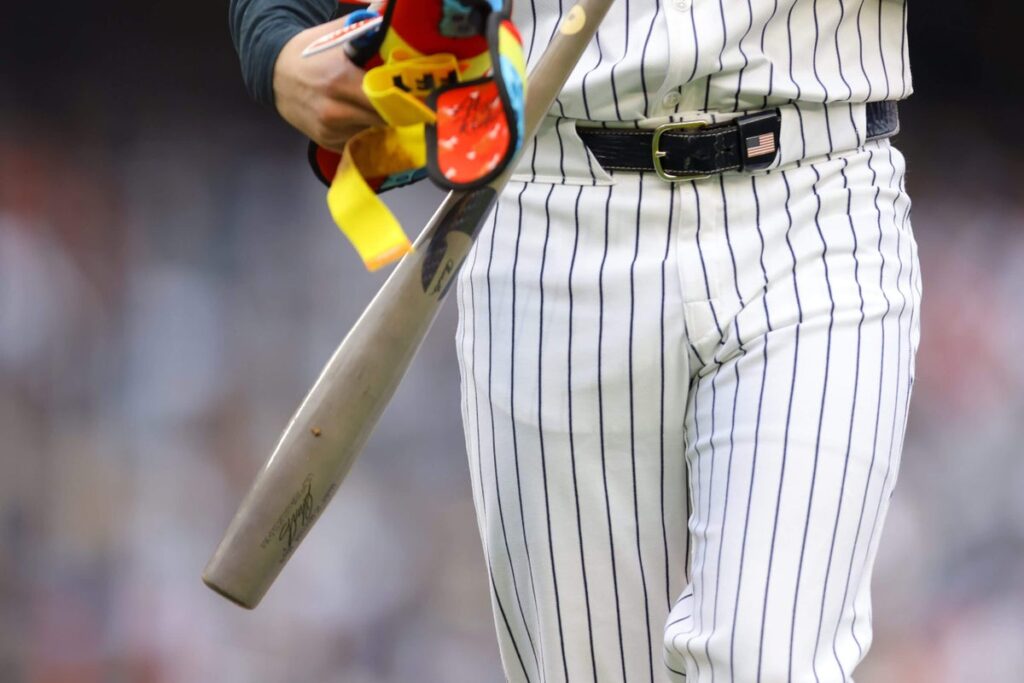
In a sport steeped in tradition, the introduction of “torpedo bats” has Major League Baseball buzzing. This weekend, the New York Yankees showcased these innovative bats in a series against the Milwaukee Brewers, resulting in a staggering display of power that has captured the attention of players and fans alike. The Yankees’ nine home runs in a single game set a franchise record, and their overall performance has sparked curiosity across the league.
Atlanta Braves first baseman Matt Olson, a two-time All-Star, is among those intrigued. Despite his impressive 2023 season, where he led MLB with 54 home runs and 139 RBIs, Olson is considering experimenting with the new bat design. “Guys are going to be trying it out now. … I might try it to just feel what it’s like,” Olson remarked, highlighting the growing interest in this equipment innovation.
The Science Behind the Torpedo Bat
The torpedo bat is the brainchild of Aaron Leanhardt, a former MIT physicist who worked with the Yankees. The design shifts more wood into the label area, effectively moving the “sweet spot” of the bat. According to YES Network announcer Michael Kay, this adjustment allows the harder part of the bat to make contact with the ball, potentially increasing the frequency of solid hits.
“So they had bats made up, where they moved a lot of the wood into the label. So the harder part of the bat is actually going to strike the ball.” — Michael Kay
The Yankees’ explosive performance against the Brewers, culminating in a 20-9 victory, has served as a live demonstration of the bat’s potential. Their 15 home runs over three games tied an MLB record, prompting players and teams to reconsider their equipment choices.
League-Wide Impact
The Yankees are not the only team exploring the potential of torpedo bats. Teams like the Chicago Cubs, Minnesota Twins, and Toronto Blue Jays have also experimented with these bats. Los Angeles Angels infielder Nicky Lopez noted that the bats were utilized during spring training with the Cubs, indicating a broader acceptance of the new technology.
Detroit Tigers manager A.J. Hinch acknowledged the growing attention, stating, “The internet has a beautiful way of bringing things to be a big deal. I hadn’t paid a ton of attention to it really until today.” Meanwhile, teams like the Boston Red Sox have been aware of the bats but have yet to integrate them into regular season play.
Historical Context and Expert Opinions
The concept of altering bat designs is not new. Throughout baseball history, players have sought ways to enhance their performance through equipment modifications. However, the torpedo bat’s unique design and its backing by a former physicist lend it a scientific credibility that sets it apart.
San Diego Padres outfielder Brandon Lockridge, who witnessed the development of the bats, recalls their initial introduction in 2022. Although not immediately popular, the bats have gradually gained traction. “His big thing was like, guys that just swing-and-miss by a fraction of an inch, you’re now fouling off, staying alive,” Lockridge explained, emphasizing the potential for increased contact.
“I think it’s really smart. It makes sense, where guys constantly hit the ball on the bat. I think it’s an amazing discovery.” — Taylor Ward, Angels Outfielder
Future Implications for MLB
As the torpedo bat gains visibility, its future in MLB remains uncertain. While some players, like Jazz Chisholm Jr. of the Miami Marlins, have embraced the new design, others remain skeptical. The bats are legal under MLB rules, which stipulate only that the bat must be smooth and round, with specific dimensions.
Philadelphia Phillies veteran hitters and others with a traditional mindset may resist the change, preferring to adapt their swing rather than their equipment. However, as more players experience success with the torpedo bat, its adoption may spread.
Ultimately, the torpedo bat represents a potential shift in how players approach hitting. Whether it becomes a staple in MLB or fades as a passing trend, its impact on the game is already being felt. As players continue to experiment, the league will watch closely to see if this innovation truly changes the game.
— The Athletic’s Cody Stavenhagen, David O’Brien, Matt Gelb, Jen McCaffrey, Dan Hayes, Sahadev Sharma, Britt Ghiroli, and Dennis Lin contributed reporting to this story.







